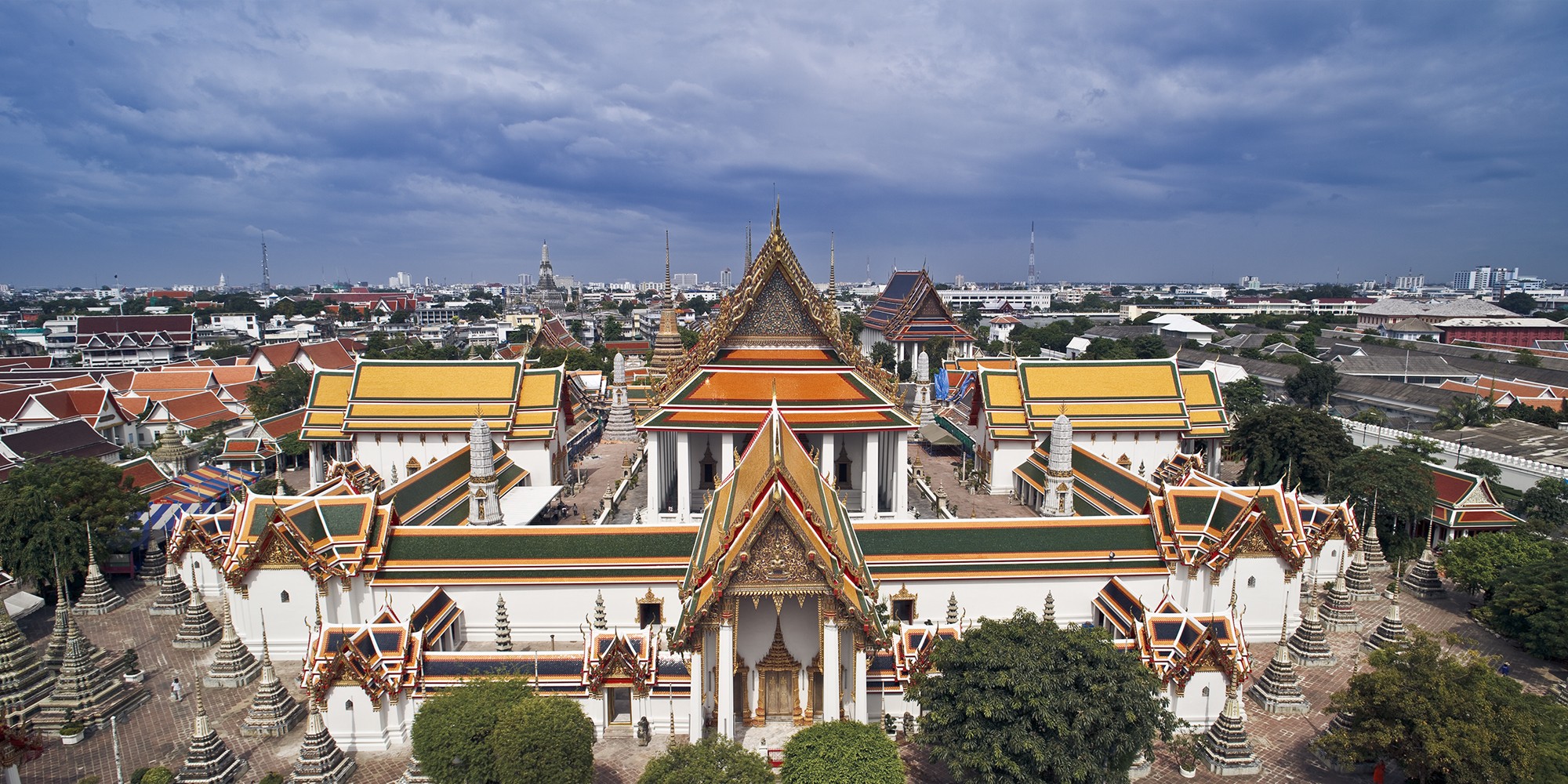

Wat Pho, the official name being Wat Phra Chetuphon Wimon Mangkhalaram Rajwaramahawihan, is the first grade royal monastery, regarded as the most important one during the reign of King Rama I of the Chakri Dynasty. The importance of this is due to the King having managed the restoration of Wat Phodharam, an old monastery from the Ayudhya period, it re-established as a royal monastery located near the GrandPalace. Some ashe of King Rama I was kept under the pedestal of the principal Buddha image known as Phra Buddha DevaPatimakorn in the main chapel. The monastery is located on the area of 20 acres the south of the Grand Palace, with Thai Wang road in the north, Sanam Chai road in the east, Setthakan road in the south and Maharat road in the west. Separated by a tall white wall on Chetuphon road, the monastery has two main quarters : the sacred (or a chapel section = Buddhavas) and the residential (or the monk’s living section = Sangghavas).
It is said in a stone inscription that, after moving to the Grand Palace, King Phra Buddha Yod Fa The Great (King Rama I) recognized that there were 2 old temples along both sides of the Grand Palace : Wat Salak (Wat Mahatart) in the north, and Wat Phodharam in the south. He ordered his noblemen from the department of the Ten Crafts to restore Wat Phodharam in 1788. This first restoration took 7 years 5 months and 28 days. Then there was a celebration in 1801 and the King named it “Wat Phra Chetuphon Vimolmangklavas”, which was changed to “Wat Phra Chetuphon Vimolmangklararm” during the reign of King Rama IV. The great restoration, Had been taken 16 years and 7 months, was done during the reign of King Rama III, by extending both the South Vihara and West Vihara where the large reclining Buddha image is kept, the Missakawan Park,Phra Mondob (Library Hall) and teachinglearning hall as nowsaday. Although there was another restoration before the Bangkok Bicentennial Celebration in 1982, no more other major work has been done on the monastery, except for some minor repairs.
From the bypaths of history in the great restoration during King Rama I and King Rama III, It is said that all best craftsmen from the Royal Palace, outside the palace, all art work specialists, and the monks devoted themselves in creating this elaborately decorated monastery. It was done to fulfill the King’s ambition of using this Wat as the centre of Thai arts and knowledge, where descendants can study indefinitely. In “The Ubosot of Wat Pho” book, Chakrabhand Posayakrit who is a famous artist of Thailand said on October 10, 1999 “The fine arts in Wat Pho are bounteous wealth of knowledge. These enormously valuable resources can stimulate and enhance youthful enthusiasm for attaining artistic excellence and distinction.”
Wat Pho is an important landmark in the Ko Rattanakosin area. Visitors can enjoy the beautiful Buddhist fine arts and the existing Thai intellect which has descended from ancient times, taken as immortal careers knowledge. The monastery is open daily from 08.00 to 18.00 hrs., with an admission fee of 200 baht.